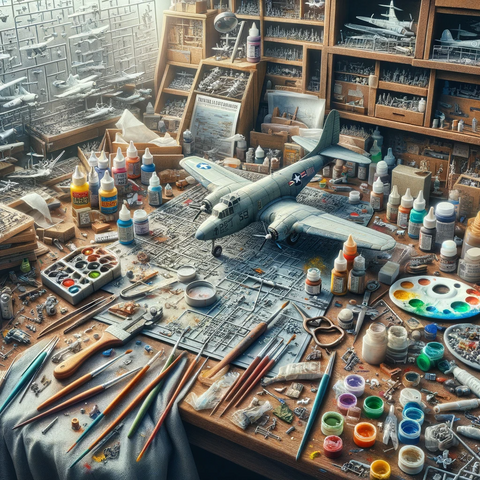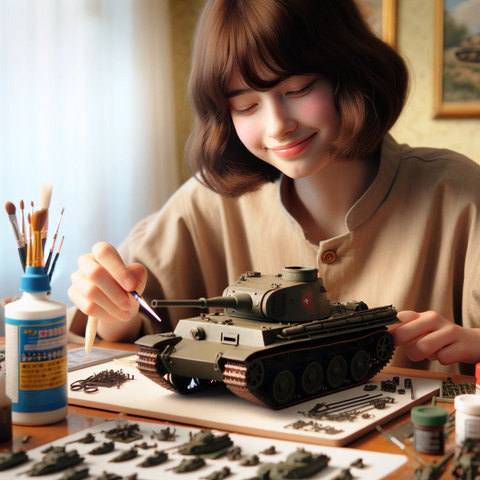
The Fascinating World of Scale Model Making
Introduction
Scale model making is a hobby that combines art, history, engineering, and craftsmanship. It involves creating miniature replicas of objects, often with meticulous attention to detail and accuracy. These models can represent anything from historical ships, aircraft, and trains to fictional spaceships and fantasy creatures. This 1000-word article delves into the world of scale model making, exploring its history, techniques, communities, and the profound impact it has on its enthusiasts.

A Brief History
The hobby of scale model making has ancient roots, with miniatures found in Egyptian tombs and ancient Greek temples. However, it wasn't until the 19th century that it evolved into a popular pastime. Initially, scale models were used for military and architectural purposes, but over time, they became recreational.
During World War I and II, manufacturers started producing model kits for the public, which included military vehicles and aircraft. Post-war, this expanded to include cars, trains, and fictional models like spacecraft from popular science fiction franchises.
The Art and Science of Model Making
Scale model making is an intricate blend of art and science. The process begins with choosing a subject and a scale. Scales can vary widely - from tiny 1:1600 to large 1:8 scales. A 1:48 scale model, for example, means the model is 48 times smaller than the actual size.
The next step is the assembly. Models can be made from various materials, including plastic, wood, metal, and paper. Plastic models, often sold as kits, are popular due to their ease of assembly and detail. These kits come with instructions and parts that need to be cut out, glued, and painted.

Advanced modellers often go beyond the kit, customising and detailing their models with additional parts, known as 'aftermarket parts,' or by scratch-building parts themselves. This process can be incredibly detailed, involving intricate painting techniques and weathering to make the model appear aged or used.
Tools and Techniques
The tools of the trade are as varied as the models themselves. Basic tools include hobby knives, tweezers, glue, and paints. More advanced tools might include airbrushes for painting, rotary tools for modifications, and even 3D printers for custom parts.
Techniques in model making have evolved significantly. With the advent of the internet, modelers now share tips and tricks online, constantly pushing the boundaries of what can be achieved. Weathering techniques, for instance, use various methods like dry brushing, washes, and airbrushing to add realistic effects of wear and tear.
Educational and Therapeutic Benefits
Scale modelling is not just a pastime; it's educational and therapeutic. It teaches patience, precision, and attention to detail. Historical models offer a gateway into learning about the past, as modellers often research their subjects extensively.
The therapeutic benefits are significant. The focus and concentration required can be a form of meditation, providing a mental break from the stresses of life. The sense of accomplishment in completing a model is also a boost to one's confidence and mental well-being.

Community and Culture
Scale model making has a vibrant community, both online and in the real world. Online forums, social media groups, and websites are filled with enthusiasts sharing their work, offering advice, and providing feedback. These communities are welcoming and diverse, spanning different ages, professions, and cultures.
Local and international competitions and exhibitions also play a significant role in the community. These events offer a platform for modellers to showcase their work, learn from each other, and celebrate their shared passion.
Challenges and the Future
Despite its many positives, the hobby faces challenges. The rise of digital entertainment options has led to a decline in traditional hobbies. Moreover, the aging demographic of modelers is a concern, with fewer young people taking up the hobby.
However, the future still holds promise. The advent of new technologies like 3D printing is revolutionizing the hobby, making it more accessible and allowing for greater customization. There's also a growing interest in crossover projects, where scale modeling intersects with other hobbies like robotics and electronics.
Conclusion
Scale model making is a hobby that encapsulates the joy of creating something with one's own hands. It is an intersection of history, art, and technology, offering both educational and therapeutic benefits. As technology evolves and communities grow, the world of scale modelling continues to offer an engaging and fulfilling experience for those who delve into its detailed and miniature world.





